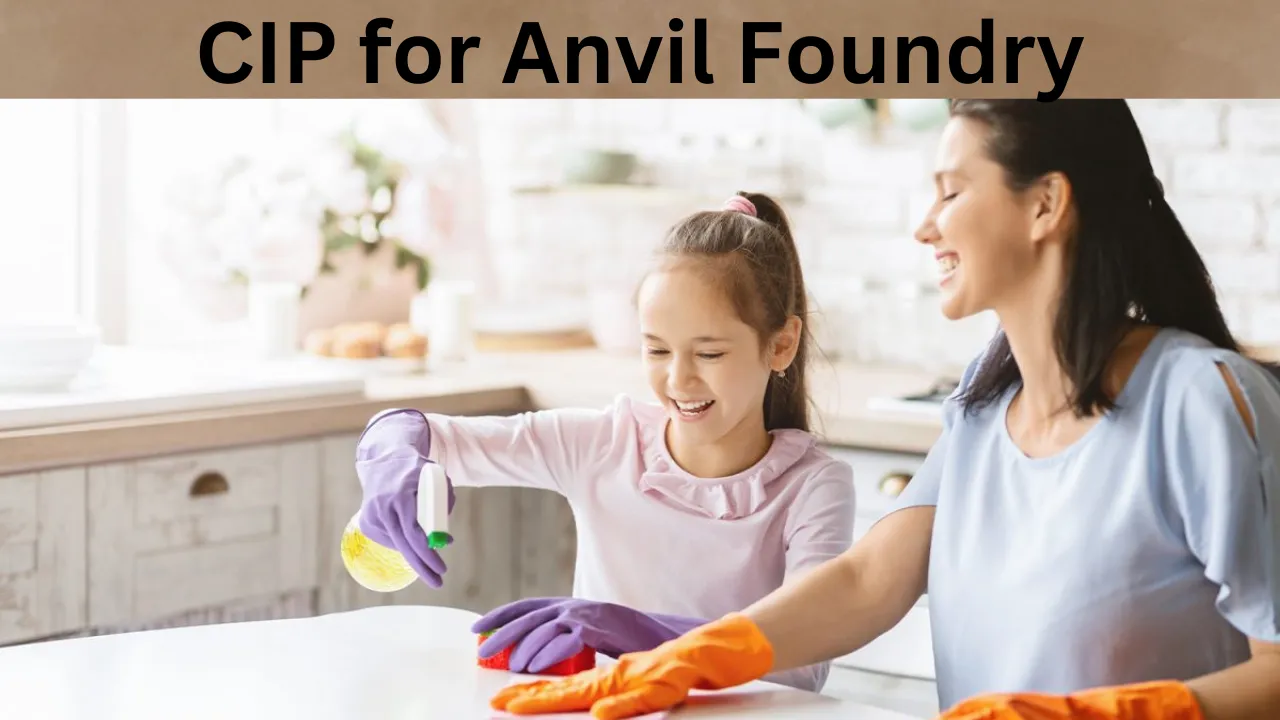CIP for Anvil Foundry: A Complete Guide to Efficient Cleaning
The Anvil Foundry is a versatile all-in-one brewing system that simplifies the home brewing process. To maintain its efficiency and ensure the production of quality beer, regular cleaning is essential. One of the best methods to achieve thorough cleanliness is through CIP, or Cleaning in Place. This article dives into the process of CIP for Anvil Foundry, offering insights on how to keep your system in peak condition.
What is CIP?
CIP, or Cleaning in Place, is a method that allows you to clean brewing equipment without disassembling it entirely. For the Anvil Foundry, this technique is especially useful as it enables the cleaning of internal components such as the pump, tubing, and heating element without manual scrubbing. By using cleaning solutions and hot water, you can ensure every part of the system is free from residues, maintaining the hygiene required for consistent brewing results.
Why CIP is Important for Anvil Foundry
The importance of CIP for Anvil Foundry cannot be overstated. Brewing leaves behind sticky residues like wort, hops, and grain particles. If these are not removed properly, they can cause contamination and affect the taste of your beer. Additionally, residues may lead to the formation of biofilms, which can be challenging to remove. Regular CIP not only keeps your Anvil Foundry clean but also extends its lifespan and prevents operational issues.
Steps for CIP in Anvil Foundry
To perform a successful CIP on your Anvil Foundry, follow these steps:
- Pre-Rinse with Warm Water
After brewing, always start by rinsing the system with warm water. This removes loose particles and makes the next steps more effective. - Use a Brewery-Safe Cleaner
Prepare a cleaning solution using a trusted product like PBW (Powdered Brewery Wash). This is designed to break down stubborn residues without damaging the system. - Circulate the Cleaning Solution
Fill the Foundry with the solution and circulate it using the pump. This process ensures that hard-to-reach areas like the pump and tubing are cleaned thoroughly. - Scrub Stubborn Areas
If there are tough stains, use a non-abrasive sponge or brush to scrub the heating element or kettle walls. Avoid using harsh scrubbers to protect the stainless steel surface. - Rinse Thoroughly
After cleaning, rinse the system with hot water to remove all traces of the cleaning solution. This step is vital to ensure no residue affects your next brew. - Sanitize Before Use
Before starting your next brew, sanitize the system with a no-rinse sanitizer like Star San. This step ensures that no bacteria or yeast interfere with your brewing process.
Common Issues During CIP and How to Solve Them
Sometimes, users may encounter issues during the CIP process. One common problem is clogged pumps or tubing due to leftover grain particles. To prevent this, always rinse the system immediately after brewing. Another issue is the buildup of hard water deposits on the heating element. In such cases, a citric acid solution can help dissolve the deposits and restore the element’s efficiency.
How Often Should You Perform CIP?
The frequency of CIP for Anvil Foundry depends on how often you brew. If you’re brewing weekly, perform a full CIP after every two or three sessions. For occasional brewers, cleaning after each use is sufficient. Regular maintenance prevents residue buildup, ensuring your system remains efficient.
Comparing Manual Cleaning and CIP for Anvil Foundry
To understand the benefits of CIP, let’s compare it to manual cleaning.
| Aspect | Manual Cleaning | CIP |
|---|---|---|
| Ease of Use | Requires disassembly | No disassembly required |
| Effectiveness | May miss hard-to-reach areas | Cleans all internal components |
| Time Required | Longer | Quicker |
| Suitability | Good for occasional cleaning | Ideal for regular maintenance |
As seen in the table, CIP offers a more efficient and thorough cleaning process, saving both time and effort.
How to Store Your Anvil Foundry After CIP
Proper storage of your Anvil Foundry after completing the CIP process is essential to maintain its longevity and prevent issues like mold or corrosion. Once the cleaning process is complete, ensure that all components are thoroughly rinsed and dried. Moisture left in the system can lead to rust on metal parts and create an environment for mold and bacteria to thrive.
Store your Anvil Foundry in a cool, dry place, away from direct sunlight, to protect the stainless steel from discoloration. Keep detachable parts, like the grain basket and hop screen, separate and dry to prevent odors or contamination. If you won’t be brewing for an extended period, consider lightly lubricating seals and gaskets with a food-grade lubricant to keep them from drying out or cracking. Proper storage will keep your equipment in top condition, ready for your next brew.
Also Read: My WirelessCoupons .com: Savings on Wireless Plans
Tips for Effective CIP on Anvil Foundry
For the best results, follow these tips while performing CIP for Anvil Foundry:
- Always use warm water for rinsing and cleaning.
- Follow the cleaning product’s instructions for the correct solution strength.
- Keep the pump and tubing clean by circulating the solution for at least 15 minutes.
- Inspect the heating element regularly for any buildup.
- Dry the system completely after cleaning to prevent mold or bacterial growth.
Benefits of CIP for Anvil Foundry Users
There are numerous benefits to regular CIP maintenance. First, it ensures that your brewing system remains free from contaminants, preserving the flavor and quality of your beer. Second, it saves time compared to manual cleaning, allowing you to focus on perfecting your recipes. Finally, a well-maintained system lasts longer, reducing the need for costly repairs or replacements.
Also Read: How to Find the Area of the Shaded Region A Step-by-Step Guide
Impact of Residue on Brewing Quality
Residues left in your Anvil Foundry after brewing can significantly impact the quality of your beer. Wort, hop oils, and grain particles not properly cleaned can lead to the development of off-flavors and unwanted bacterial growth. These contaminants may cause sour or bitter notes in your brew, deviating from the intended flavor profile. Additionally, the presence of biofilms—a thin layer of bacteria and yeast—can interfere with fermentation, resulting in inconsistent carbonation or poor head retention.
Residue buildup on the heating element can also affect the efficiency of the brewing process. It may cause uneven heating, leading to scorching or caramelization of sugars, which can introduce unpleasant burnt flavors. Regular CIP ensures that your Anvil Foundry remains free from these residues, maintaining the integrity and quality of your beer.
Also Read: TeX9.net Revolutionizing the Digital Landscape
User Experiences and Tips for Efficient CIP
Many homebrewers who use CIP for their Anvil Foundry share valuable tips to optimize the process. One common piece of advice is to run the cleaning solution through the system immediately after brewing, while the equipment is still warm. This helps dissolve sticky residues more effectively. Users also recommend periodically disassembling the pump and valves for a more thorough clean, especially if you notice reduced flow during circulation.
Some brewers suggest alternating between alkaline and acidic cleaners to prevent both organic residue buildup and hard water deposits. Another tip is to invest in a temperature controller to ensure the cleaning solution maintains an optimal temperature, usually around 150°F, for effective residue removal.
Brewers who follow a strict CIP regimen often report consistent beer quality and fewer issues with equipment performance. They emphasize the importance of using quality cleaning agents and sanitizers and advise keeping a regular maintenance schedule to avoid any disruptions in the brewing process. Learning from the experiences of other brewers can help you improve your own CIP routine and ensure your Anvil Foundry delivers the best results.
Also Read: Brian Bosworth Seattle Net Worth Football Star to Hollywood Icon
Conclusion
Maintaining your brewing equipment is crucial for producing high-quality beer, and CIP for Anvil Foundry plays a vital role in achieving that. By adopting a regular Cleaning in Place routine, you ensure your system stays free from residues and contaminants, preserving the flavor and consistency of your brew. CIP not only saves time and effort compared to manual cleaning but also extends the lifespan of your equipment, making it a worthwhile investment for any homebrewer.
Understanding the process, avoiding common mistakes, and learning from other brewers’ experiences can help you optimize your CIP routine. Furthermore, the environmental benefits of CIP make it a sustainable choice for those who care about eco-friendly brewing practices. Whether you’re a seasoned brewer or just starting out, a clean and well-maintained Anvil Foundry will consistently deliver great results, allowing you to focus on what truly matters—crafting the perfect beer.
Also Read: Coyyn.com Business: Empowering the Digital and Gig Economy







